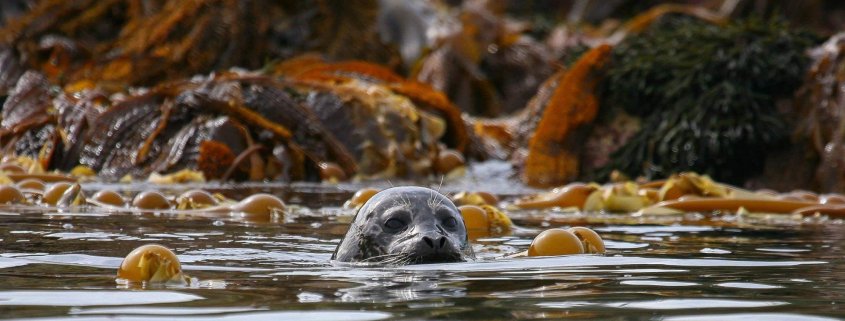
During the Salish Sea Marine Survival Project, four key hypotheses were assessed:
- An increase in the abundance of predators has led to higher juvenile salmon/steelhead mortality.
- Certain predators specialize in consuming juvenile coho, Chinook, and steelhead, and the number of predators that specialize has increased.
- Predation rates have increased due to large pulses juvenile salmon/steelhead entering the marine environment.
- The probability of being detected/targeted by predators may decrease with an increase abundance of alternative prey e.g herring, hake, anchovy etc.

The key results were as follows:
Predator Abundance and Specialization
- While multiple predators were investigated in the project, harbour seals were the primary focus. Harbour seal abundance has increased seven-fold in the Salish Sea since receiving protection under the Marine Mammal Protection Act of 1972. Correlative analyses suggest this harbour seal abundance trend is correlated with changes in productivity or marine survival of Chinook, coho and steelhead.
- Assessments of seal diets suggest that seals preferentially target juvenile Chinook, coho, and sockeye salmon in the spring more so than pink and chum salmon even though they are more abundant. This may be due to their comparatively larger size at outmigration.
- While juvenile salmon are a minor component of the overall seal diet (<5% juv. salmon, and ~2% juvenile Chinook in the spring diet, although this varies quite a bit year to year), the high abundance of seals and their energetic demands can still result in a significant impact. It is estimated that harbour seals are consuming 5-39% of all hatchery and wild juvenile Chinook and 3-9% of juvenile Coho migrating out of Puget Sound. In the Strait of Georgia, it is estimated that harbour seals are consuming between 37%-43% of all hatchery and wild juvenile Chinook, and 47%-59% of all coho. A wider range of juvenile salmon sizes were used for the Puget Sound consumption estimates, illustrating the sensitivity of these consumption estimates to assumptions about prey size. Further, limited sampling locations, such as a focus on estuary versus non-estuary sites in the Strait of Georgia estimates, could affect generalizations to the entire population.
- Population-level impacts of harbour seal predation on juvenile salmon are more likely the result of generalist feeding behavior by a large proportion of the seal population rather than the result of fewer specialists. Higher consumption of juvenile Chinook and coho occurs during the summer when these fish are broadly distributed offshore in the Salish Sea. Summer is also the period where Chinook are switching to piscivory, which can co-locate them with herring they are targeting. As herring are a primary prey for harbour seals, this behavior likely makes them more vulnerable to predation.
- Broadly, male harbour seals may have a greater tendency to consume juvenile Chinook compared to female harbour seals.
- There is also some evidence of specialization on smaller scales. For example, only a portion of a group of harbour seals studied (~18%) appeared to be targeting releases of hatchery coho at the mouth of the Big Qualicum (or Puntledge). Further, certain animals may be specializing in consuming salmon or steelhead where there are migration barriers such as the Hood Canal Bridge, the Ballard Locks, pinch points in estuaries, light from overwater structures, and artificial pinniped haul outs or seabird roosts.
Prey Switching and Pulse Prey Abundance
- Prey switching is when there is a strong preference for prey that are more common in the environment and a weak preference for prey that are rare. Data were unclear as to whether prey switching could have contributed to declines in marine survival Salish Sea wide since the 1980s, but we did find lower predation on steelhead in Puget Sound in years when anchovy are abundant, so such a relationship is possible.
- While juvenile salmon are not a primary source of prey for harbour seals and other opportunistic predators, seals may still respond to consolidated releases of large numbers of hatchery fish. Examples of seal, fish and bird predators responding to high densities of hatchery releases have been documented in the Salish Sea. The diversity of hatchery Chinook release dates and sizes in the entire Salish Sea has decreased substantially since the 1990s, with the mean release date converging around the third week of May and release size in the preferred range of predators. This can result in increased mortality of the hatchery Chinook and increased mortality of other salmon and steelhead occupying the same space.
Management Implications and Next Steps
- Pinnipeds are protected in the US by the Marine Mammal Protection Act and regulated in Canada by the Fisheries Act, and the social consequences of culling marine mammals are significant. Further, modeling suggests that if increased harbour seal abundance is the primary driver of predation-based mortality, an initial 50% seal population reduction, plus killing 3,000 animals per year is required to increase numbers of returning adult salmonids, which seems to be something unlikely to receive much traction.
The following recommended next steps are a general summary from various forums that occurred in 2019, including two pinniped and salmon workshops (Trites & Rosen 2019, Trzcinski 2020) and the SSMSP Synthesis Committee retreat.
Possible Studies
- Improve our understanding of salmon prey size, gender and age variation in seal diets, estuary versus non-estuary variation in seal diets, and seal abundance, distribution, and demographics. Update correction factors for seal abundance estimates if needed.
- Assess total salmon abundance (hatchery + wild) versus proportion of salmon in seal diets to look for a functional response.
- Develop maps to show overlap between prey (Chinook, coho) and predator (seal) distribution data. Use to improve our understanding of predation hot spots to focus on salmon populations of greatest concern. If possible, compare distribution of salmon populations with high versus low marine survival rates.
- Use existing and new diet data to determine how predation on juvenile salmon co-varies with other prey species in the diet, as well as water temperatures, regions, population sizes, etc.
- Assess impact of increased presence of transient orcas on the abundance, distribution, and behavior of pinnipeds as they can have a significant impact.
- Use models to assess seal predation and the consequences of seal culls from an ecosystem context and evaluate whether the predation is additive or compensatory (ie would the predated salmon have died anyway in the absence of predators, for example as a result of poor condition or disease etc).
Possible Experiments
- Remove artificial haul-outs and assess changes in predation rates on salmon.
- Experiment to determine if changes in hatchery release timing effects predation rates. Assess relationship between the timing of presence of juvenile salmon in scats and the timing of release.
- Undertake lethal removals of pinnipeds in certain areas and compare outcome to areas where pinnipeds were not removed (treatment-control).
- Modify artificial migration barriers or pinch points where pinniped forage to improve fish passage. Test whether this reduces predation rates.
- Test pinniped deterrent devices at migration barriers or pinch points and predation hotspots.
- Test the utility of increasing flows in systems subject to high predation during outmigration of smolts and return of adults to see if this results in higher survival (fish are more protected from predation AND in the case of adults, high flows will result in faster entry into river systems and less milling/holding in estuaries (where they are at risk)).
- Try more net pen rearing and releases/barging fish beyond predators.

